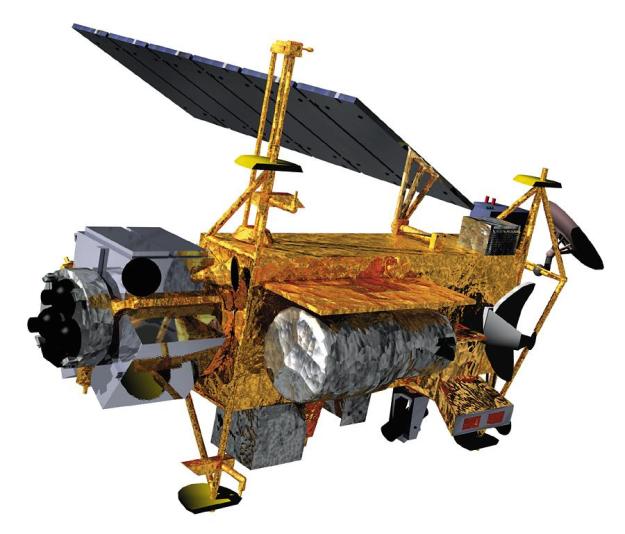 The decommissioned UARS weather satellite has landed – albeit in a number of pieces.
The decommissioned UARS weather satellite has landed – albeit in a number of pieces.
Speaking to BBC radio at 4am ET, NASA spokesman Steve Cole said the satellite had re-entered the Earth’s atmosphere “somewhere over the Pacific Ocean.” The precise location is not yet known.
NASA posted a message on its Twitter feed at 3.30am ET saying: “We can now confirm that #UARS is down! Debris fell to Earth between 11:23 p.m. EDT Friday, Sept. 23, and 1:09 a.m. EDT Sept. 24.”
There had been reports of parts of it landing in Okotoks, a town south of Calgary in western Canada, but these are unconfirmed.
Up to now there are no reports of it landing on anyone. That’s good news. Statisticians had said there was a 1-in-3,200 chance that the six-ton satellite, or a part of it, could land on someone.
The Upper Atmosphere Research Satellite (UARS) had been up in space since 1991 although it’s been out of action since 2005.
It’s not yet clear how much of the 10-meter-long satellite burned up on re-entering the Earth’s atmosphere, and over how wide an area the debris has landed. Cole told the BBC he believed up to 90 percent of the satellite would have burned up on re-entry.
According to a BBC report on Friday, experts had been predicting that the less robust parts of the satellite, such as the solar array and antennas, would be torn off fairly early on in its descent.
As the satellite gathered speed during its fall, it would have heated up dramatically, causing low-temperature materials to melt and vaporise. Components that have probably made it to the Earth’s surface include high-temperature metals like stainless steel, titanium and beryllium.
NASA has stated that if anyone finds a piece of the satellite, they should not touch it and instead contact local law enforcement authorities. But if all the bits and pieces landed in the Pacific, it’s a safe bet no one will be seeing UARS ever again.
Editors' Recommendations
- Why the moon needs a space traffic control system
- How SpaceX could transform Starlink into an ultraprecise GPS network
- NASA is operating its Mars Curiosity rover from workers’ home offices
- Even on Mars, the Curiosity rover needs to wash its hands
- NASA’s OSIRIS-REx spacecraft to perform an asteroid sampling rehearsal


